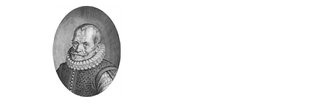Plants, Magic & Medicine in the Indian Ocean and the Work of Garcia de Orta

Luís de Camões – a debaucher, Indian Ocean rover, and Renaissance poet - was among Orta's close friends in Goa, India. In fact, his first published poem is a eulogy of Orta appearing in the latter’s Colloquies, where, significantly, he compares Orta to the centaur Chiron, a sage, healer, and prophet. Doing a ‘heretical’ reading (following Jeffrey Kripal’s injunction) of Orta’s text, i.e., an intuitive reading against the grain of orthodoxy of his time and later (Orta was posthumously accused of ‘judaizing practices’ by the Inquisition and his remains were burned in an auto-da-fé in Goa) involves navigating around the edges of the inquisitorial framework known to have constrained Orta’s life and work. Three lines of inquiry propose themselves here: 1) mapping out both land-based and oceanic networks of mystico-religious and philosophical exchange, profiting from indications in Orta’s own text (for instance, his constant mentions of Avicenna); 2) inquiring into the role of plants and drugs in European, Indic & Islamicate magic, medicine, and religion; 3) and last but not least, looking into the actual, variegated use of some plants in various Indian Ocean & Middle Eurasian locations over time, for instance, in cults and cuisine, as well as various forms of consciousness change and traditions of healing. Betel & areca nut, the baobab, coconut, datura, tamarind, and turmeric (açafram da terra in Orta’s book) are among the promising candidates here. This research also includes an investigation into the links between Indic plant lore and current uses of plants in varieties of traditional & modern preventive medicine and (ethno) psychiatry, including tantric practices. Orta’s Coloquios dos simples contains incidentally the first known description of Ayurveda by a European.
Beteiligte Personen


